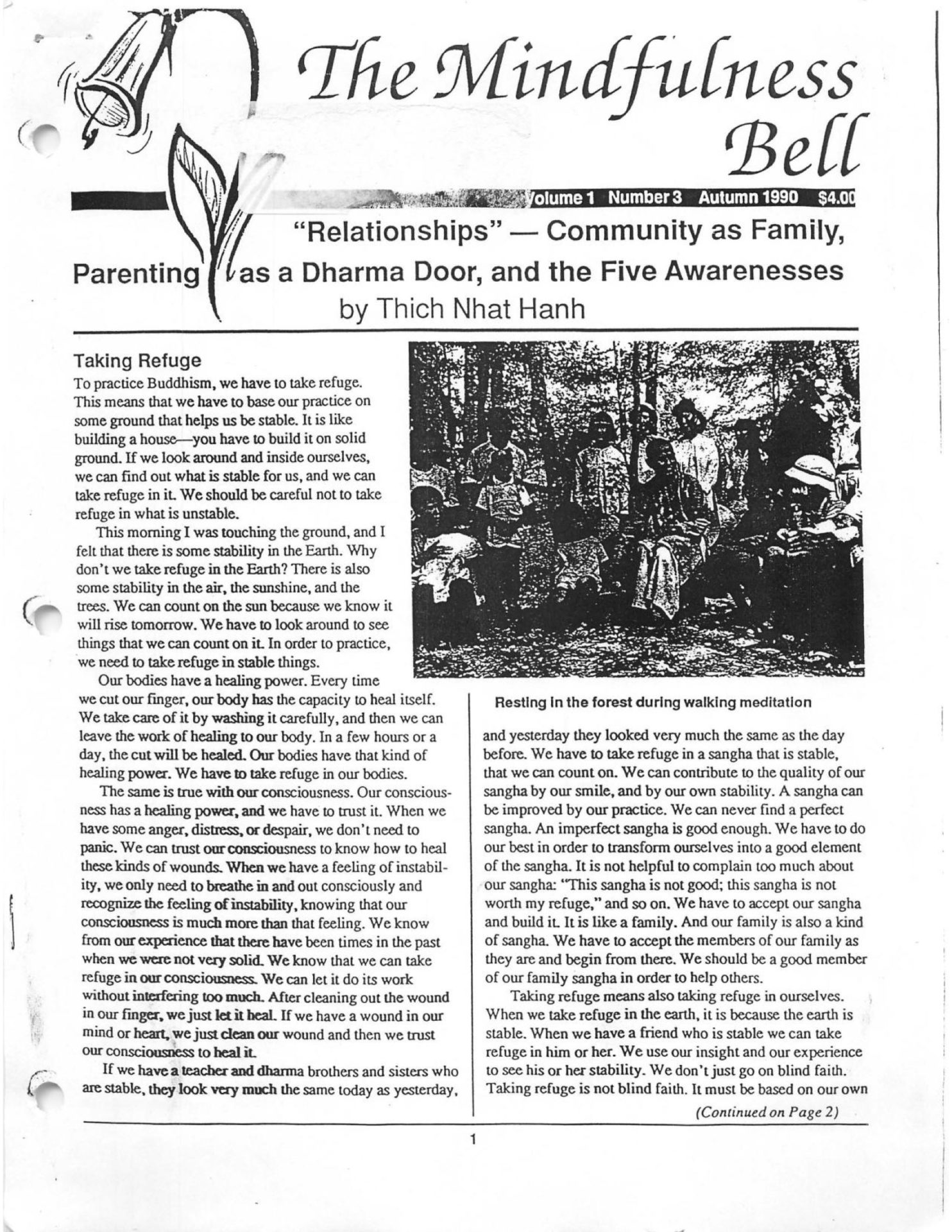By Thich Nhat Hanh in September 1990
When you practice hugging meditation, before you hug someone, you breathe in, bow to him or her with respect, and say to yourself, “A lotus for you.” If you have never seen a lotus, you can say, “A magnolia for you.” Or if you are from Holland, you may want to say, “A tulip for you.” All flowers are beautiful.
When you breathe out, you say, “A Buddha to be.” Then you open your arms and hug the other person. When you hug a child, you can lower yourself down to be at the height of the child. As you hug,
By Thich Nhat Hanh in September 1990
When you practice hugging meditation, before you hug someone, you breathe in, bow to him or her with respect, and say to yourself, "A lotus for you." If you have never seen a lotus, you can say, "A magnolia for you." Or if you are from Holland, you may want to say, "A tulip for you." All flowers are beautiful.
When you breathe out, you say, "A Buddha to be." Then you open your arms and hug the other person. When you hug a child, you can lower yourself down to be at the height of the child. As you hug, continue to practice breathing consciously three times:
Breathing in,
I am hugging him.
Breathing out,
it is so wonderful.
Breathing in,
he is alive in my arms.
Breathing out,
I am really hugging him.
Breathing in,
my loved one is so precious.
Breathing out,
I am completely here.
You may use other verses, but it is important that you follow your in and out breaths three times in order to be aware that you are with that person in such a deep, deep way. When you are mindful, you are really there, and the person you hug is really there also. Both of you are present in that wondrous moment.
Mike Kline, a resident of Plum Village, wrote a song that says, when you go out of a room, you should close the door carefully. It may be the last time you leave through that door. You may die before you go into that room again or you may have to go far away and never have a chance to return to that room. He was practicing the awareness that things are impermanent. Each time we hug, we know that it may be the last time, and the deep awareness of the impermanent nature of things inspires us to be very mindful, and we naturally hug each other in a deep, authentic way, appreciating each other completely.
Hugging meditation is a practice of awareness. We make ourselves present. Often we are not really present with our children or our loved ones. We get caught up in other things, like our job or the news on TV. Hugging is to return to ourselves, to become present, totally available for another person. "I am entirely here for you." If you hug someone without that spirit, the hugging is only a ritual, with no content. But if you are mindful and make yourself present, your hugging will have a deep power of healing and transforming--not only for the other person, but for yourself as well. Therefore, it is important to breathe in and out and bow before you hug. That is a real opportunity to return to yourself, to make yourself entirely present.
Hugging in public is a Western practice. Meditation—conscious breathing—is an Eastern practice. The two come together in hugging meditation. I think it is a good combination. It is like the tea bag—tea is a product of Asia, but when it arrived here, you created tea bags. In hugging meditation, we bring together elements of East and West, and provide humanity with a wonderful result. Vietnamese who live abroad have been learning hugging meditation. There are those who still can't accept hugging in public, but many of them have found expressing love through hugging meditation to be a wonderful practice.
In order for Buddhist practice to be rooted in the West, new dharma doors should be opened. I think hugging. meditation can be considered to be one of these doors.


